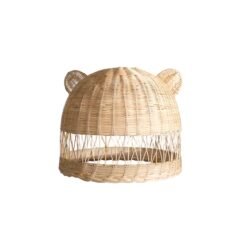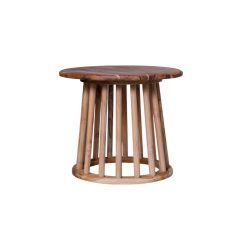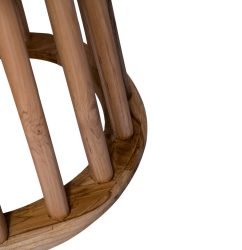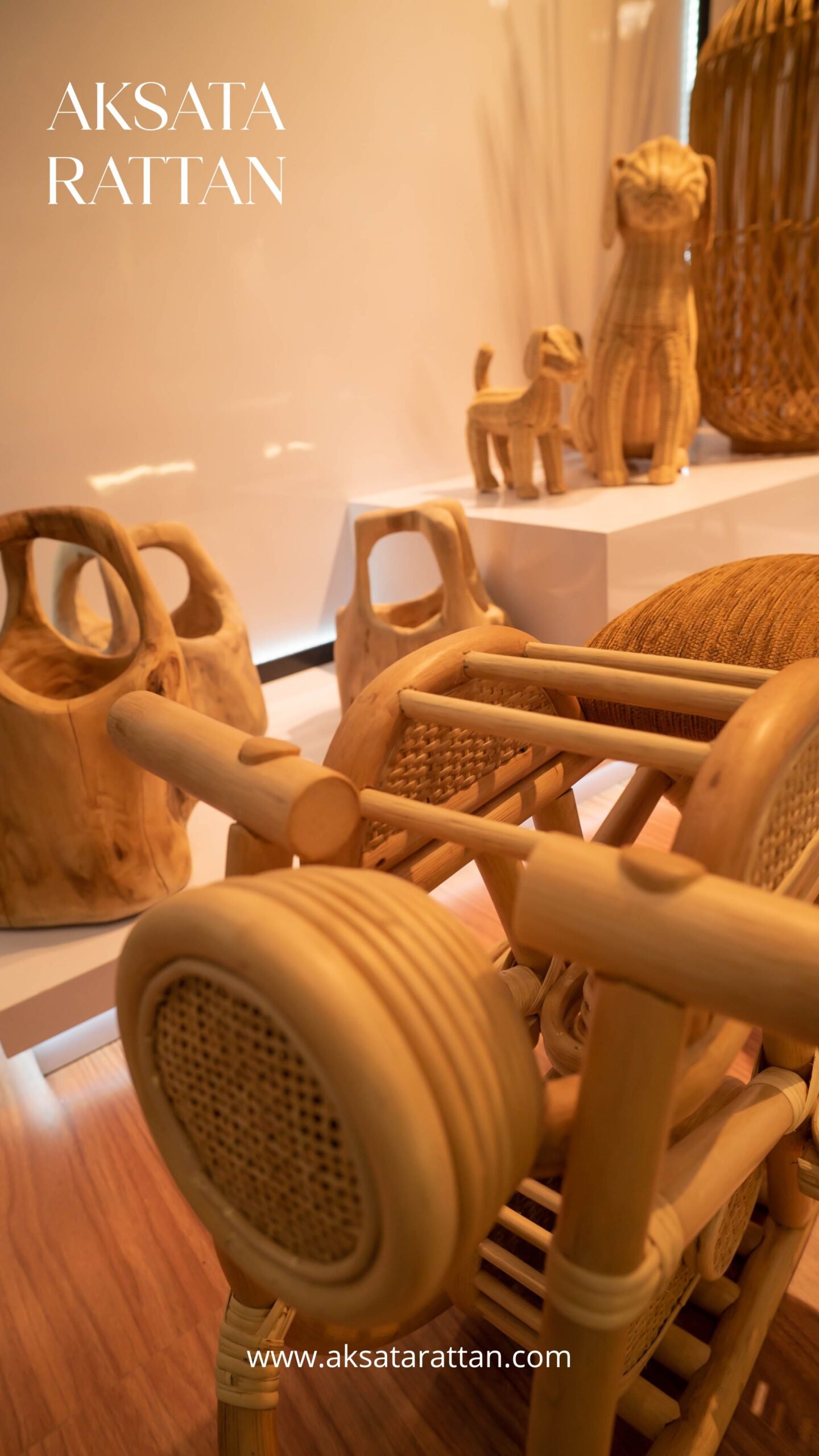In a world full of plastic toys, handmade rattan toys are quietly making a comeback — and for good reason. They combine safety, natural beauty, and environmental responsibility in a way that appeals to modern parents and children alike. Below, we explore why handmade rattan toys are a compelling choice, and how to select and care for them.
1. Safety First: Non-Toxic & Gentle for Children
One of the biggest advantages of handmade rattan toys is their potential for being safer than many mass-produced alternatives. Because they are crafted with natural materials, when processed and finished properly they avoid the toxic chemicals, heavy metals, and synthetic plastics that sometimes appear in cheaper toys.
- Rattan baby and toddler toys are often promoted as non-toxic and safe for little hands, as long as finishes (paints or varnishes) are water-based and free from harmful additives. thanhcongcraft.com
- The weaving process naturally smooths edges and surfaces, so well-made rattan toys tend to have fewer sharp corners or splinters than crude wooden or molded plastic parts.
- Because they are light but sturdy, rattan toys can be handled easily by small children without being too heavy or unwieldy.
That said, safety still depends heavily on craftsmanship: ensuring tight weaving, secure joints, smooth finishes, and the absence of small detachable parts for very young children.
2. Stylish & Timeless Design
Beyond safety, one of the biggest draws of handmade rattan toys is their aesthetic appeal. They offer a warm, organic look that blends well with many interior styles — from minimalist and Scandinavian to boho and natural.
- Rattan’s neutral tones and pleasing textures make it a decorative as well as playful material. rattankidsfurniture.com+1
- Unlike bright, flashy plastic toys that risk becoming eyesores or clutter, rattan pieces can elegantly live in a child’s room, blending with furniture and décor.
- Each piece is often one-of-a-kind (or with small variations), giving it artisanal charm rather than mass-produced uniformity.
If you want a few example products:
- Wicker Dolls Pram Natural — a classic pram made of woven rattan, ideal for pretend play and gentle pushing.
- Olli Ella Rattan Wonder Wagon — a sturdy rattan wagon that mixes utility and aesthetic style.
- Rotan Rumah Sirkus / Mainan Rotan — a small rattan “circus house” style toy, whimsical and decorative.
- Rotan Tongkat Matahari / Rattan Toy Stick — a simple rattan wand or stick toy, useful for imaginative play.
- Handmade Rattan Miniature Baskets — tiny woven baskets, great for sorting games or pretend play.
- Kuda Ratan Mainan Anak — a rattan rocking horse toy (kuda = horse).
These examples illustrate how rattan toys can be playful and functional while also being aesthetically pleasing.
3. Sustainability & Ethical Impact
One of the strongest selling points for handmade rattan toys is their environmental credentials and role in supporting artisan communities.
- Rapidly renewable material: Rattan grows quickly and is relatively easy to harvest without deforestation, making it more sustainable than many hardwoods or non-biodegradable plastics. The Hoppi Hippo+1
- Biodegradable: At end of life, a rattan toy can degrade naturally without leaving toxic residues, unlike plastics which may persist for centuries.
- Supporting traditional craftsmanship: Many handmade rattan toys come from artisan villages and small workshops, especially in Southeast Asia (Indonesia, Vietnam, etc.). By purchasing these, customers help sustain livelihoods and preserve cultural craft traditions. Wikipedia+1
- Lower carbon footprint: The production processes for handmade items are often less energy-intensive than industrial plastic manufacturing, and the materials are local in many rattan-producing regions, reducing transport and synthetic input costs.
4. How to Choose High-Quality Handmade Rattan Toys
To make sure the toy you buy is safe, durable, and truly handmade, here are criteria to inspect:
- Check the weave quality: Tight, even weaving with no loose ends or gaps.
- Test the joints: Where pieces join or bend, it should feel sturdy — no wobbling.
- Smooth finish: Surfaces must be free from splinters or rough edges; finishes should be child-safe (water-based, low VOC).
- Appropriate size & weight: The toy should be manageable for the intended age group.
- Avoid small loose parts: For younger children, avoid toys with detachable small pieces that could be swallowed.
- Ask for origin & craftsmanship details: Support makers who are transparent about sourcing and labor practices.
5. Caring for Your Rattan Toys
To keep handmade rattan toys lasting for years, follow these simple care tips:
- Wipe with a soft, slightly damp cloth — avoid soaking or submerging in water.
- Keep out of direct sunlight for prolonged periods to prevent drying out or fading.
- Occasionally apply a light coat of natural oil (e.g. linseed oil or beeswax) to preserve moisture and luster.
- Inspect regularly for any loosening strands or joints and perform gentle repair if necessary (e.g. by weaving or reinforcing).
- Store in a dry, ventilated area to prevent mold or mildew in humid environments.
6. Play Value & Development Benefits
Handmade rattan toys aren’t just pretty — they support developmental goals:
- Encourages open-ended play: Many rattan toys (baskets, wagons, prams) don’t dictate a function, letting children invent uses.
- Supports fine motor skills: Handling woven textures, opening baskets, placing doll accessories—all help coordination.
- Fosters imaginative and social play: Toys that mimic real-life tools (strollers, baskets) help children role-play everyday life.
- Introduces sensory exploration: The tactile feel of rattan is different from plastic or metal, adding tactile diversity.
Conclusion
Handmade rattan toys present a compelling blend of safety, style, and sustainability. They appeal to those seeking meaningful, long-lasting playthings that don’t compromise on aesthetics or ethics. With careful selection and care, these toys can delight children while nurturing respect for the planet — and support artisan communities in the process.





